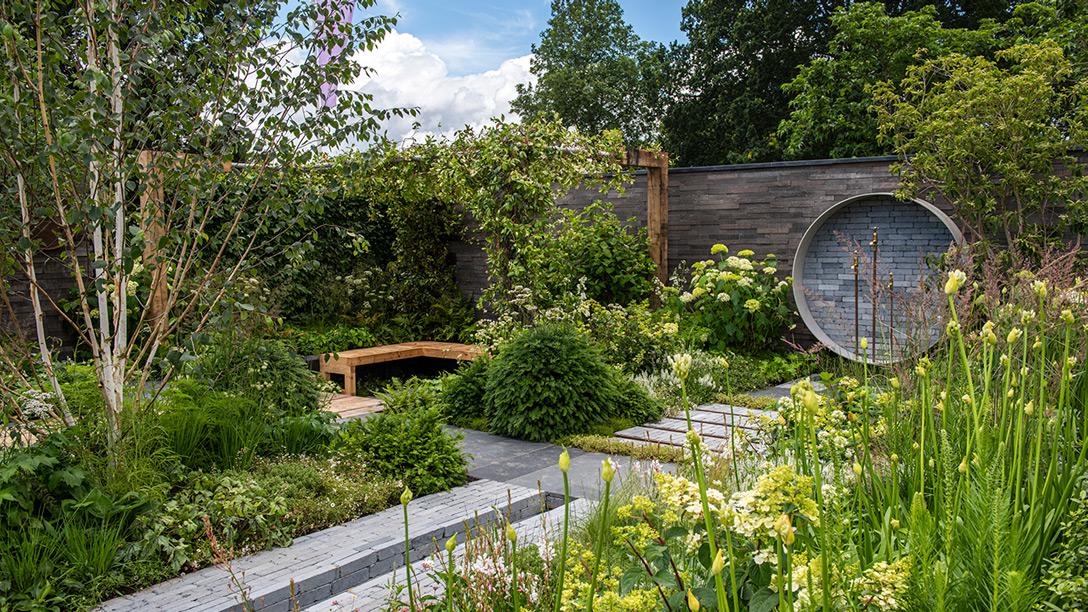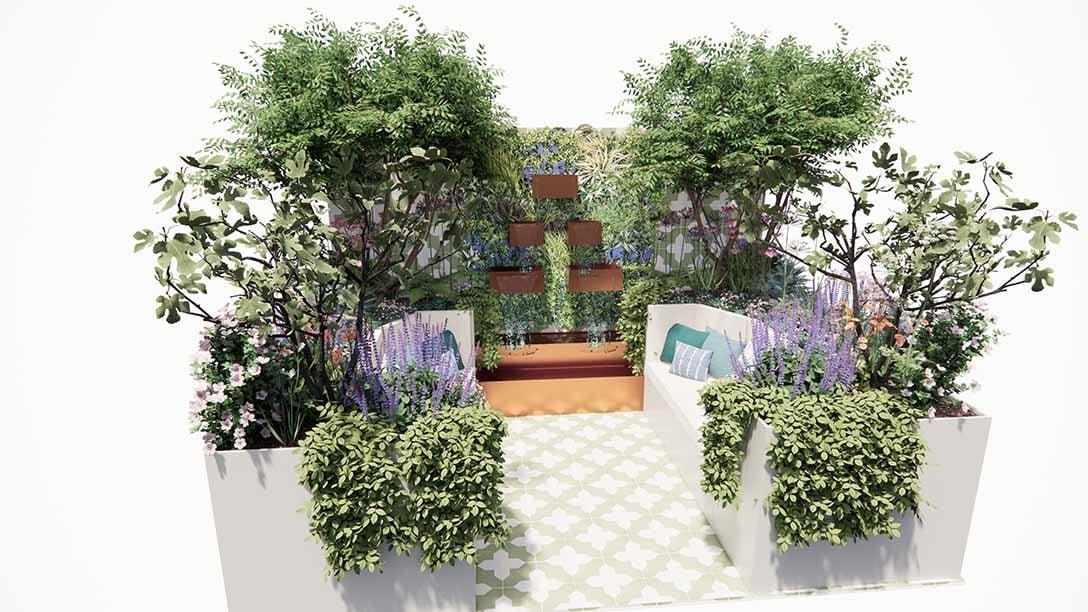
How A Garden Designer Can Help You to Tastefully Rewild Your Garden
Rewilding gardens has had a lot of press coverage lately and there’s no doubt about it, many people find the idea appealing. But there’s a big difference between a wild area and a usable garden. In this article, we’re looking at how a garden designer can help you to rewild your garden so that it is usable, beautiful and a haven for wildlife.
What Is Rewilding?
The Rewilding Britain organisation defines rewinding as the large-scale restoration of ecosystems to the point where nature is allowed to take care of itself. There are a limited number of gardens in the UK that can accommodate large scale projects. However, most of us with gardens can do our bit to nurture biodiversity. So, what can the average garden-owner do to support nature and minimise workload?
- Mow the lawn less often and allow different plant species to thrive among the grasses
- Be less tidy - piles of leaves, logs and rocks all provide habitat or food for mini beasts and wild creatures
- Return nutrients to the soil by mulching with natural materials as opposed to using chemical fertilisers. This will also encourage nature's aerators (worms) to create a healthy soil structure
- Stop using pesticides, herbicides and fungicides - enjoy watching how nature finds a balance without our ‘help’.
- Be more tolerant of plants that you didn’t plant yourself. So-called ‘weeds’ can be a real blessing in a garden ecosystem
- Choose plants wisely - think about what will thrive in the garden with minimal human intervention and also what will support pollinators, birds and other wildlife
- Plant native trees and hedges such as rowan, hawthorn, silver birch, plum or guelder rose
- Introduce water to the garden. A rain garden is a great way to make use of runoff from hard surfaces. Even a small pond will support a surprisingly large array of life

Rewilding Pros and Cons
The benefits of rewilding are enormous. Less gardening for you, no expensive chemicals to buy and the joy of seeing all manner of creatures enjoying your garden alongside you.
However, if you do decide to rewild your garden, it’s important to realise there’s more to it than locking your tools in the shed and letting your nature take over the management of your outdoor spaces.
Left to her own devices, Mother Nature will plant brambles, let shrubs outgrow their spaces and annoy your neighbours by blowing weed seeds into their gardens. That’s ok in large scale places like heaths and meadows, but in a garden, it can be overwhelming and can render the space unusable.
A garden designer however, can help you to mitigate the downsides of rewilding and truly reap the benefits of a biodiverse garden.
How Can a Garden Designer Help You to Rewild Your Garden?
Garden designers, especially those who are members of the Association of Professional Landscapers, are experts at helping people to create the gardens they dream of. An APL Garden Designer will help you to find the right balance of garden features so that even the wildest of gardens is attractive and usable.
By adding a network of paths and seating areas to your garden, you will be able to immerse yourself in nature at any time of the year. That way you can truly appreciate the changing seasons and take an interest in the flora and fauna that appear at different times of the year.
Having structure to your outdoor space means that it remains a garden - rather than it reverting to an inaccessible bramble patch. It will be clear to neighbours, visitors, or even potential house buyers that the garden has been designed with nature in mind.
Your garden designer will be able to create a series of microclimates to enable your garden to support a greater diversity of species. Shaded spots, damp spots, sunny spots, sheltered spots and exposed spots all attract different types of plants, insects, birds, reptiles and mammals.
Plant choices are key when rewilding a garden and a garden designer’s horticultural knowledge is invaluable in this. Not only can they recommend plants that will support wildlife and thrive in the space, they can help you arrange those plants to be aesthetically pleasing. There may even be opportunities to grow edible plants so that you can use your own backyard as a foraging patch.
Image Credit: Then Anywhere Courtyard Garden from RHS Chelsea 2024

Finding The Compromise Between Nature and Nurture
Of course, pure rewilding does simply mean letting nature do her thing, but as we’ve discussed, that’s probably not a great tactic for a garden. It may even lead to your property losing value. A little bit of maintenance from time to time will be essential to help you find the best compromise between nature and nurture.
Rewilding your garden with the help of a garden designer will mean that the finished plot will be easy for you to maintain. But it will never be a no-maintenance space. For example, some plants that are desirable in a wildlife garden are inclined to be invasive. Stinging nettles are one such plant.
Hedges and shrubs will easily outgrow their space and shade out other plants if they are not regularly trimmed. Even wildflower meadow plantings will revert to grass if not carefully managed.
Having your rewilding garden professionally designed may sound like a contradiction in terms but it is a good compromise between the needs of mother nature and the lifestyle you want to lead.
This article by Noel Brock talks more about the wildlife value of gardens and how they can be optimised with maximum enjoyment for the people using those gardens. /value-of-wildlife
Bee a hero - how your landscape choices can help bees. /landscaping-guidance/bee-a-hero-how-your-landscape-choices-can-help-bees
Find a garden designer. /find-a-landscaping-professional/landscaper-directory
